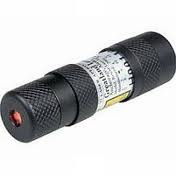 Loading... Please wait...
Loading... Please wait...Categories
- Home
- Safety and Rescue Equipment (Sea and WW)
- Greatland Laser - Rescue Laser Light (RED)
- Home
- Safety and Rescue Equipment (Sea and WW)
- Communications - Calling for Help
- Greatland Laser - Rescue Laser Light (RED)
Greatland Laser - Rescue Laser Light (RED)
Sorry but this item is currently unavailable.
Please check back at a later stage.
Product Description
The RLL012-01 Rescue Laser Light is a hand-held nighttime laser signaling device that provides a convenient, effective way to signal a rescue party over 20 miles (32 km) away, depending on atmospheric conditions. It's waterproof, rugged design combines the safety of a laser signalling device with the convenience of a flashlight. Unlike flares, the Rescue Laser Light is non-flammable, non-hazardous and can operate continuously for over 40 hours on a long-life replaceable lithium battery.
Specifications:
Visibility: 20 Miles (32km) optimum conditions, unaided eye
Waterproof: To 80 feet (24m)
Laser Diode: 10,000 hours meantime to failure
Operational Life: 40 hours continuous use
Battery: CR123 llithium battery
Made in USA
HOW TO AIM
- Detecting When looking for any retro-reflective materials, point the laser output end (laser aperture) toward the object you are scanning and hold the laser near your line of sight to see the return flash from the object.
- Signaling Point the laser output end (laser aperture) toward the target. Make a "V" with your outstretched hand over the intended target. With the laser held near your eye in line of sight, slowly scan the vertical laser back and forth between your fingers toward the target, making each finger red as you scan.
- Move the laser line VERY SLOWLY back and forth across the target (five degrees per second or slower). This type of signaling is referred to as "scanning." The slower the laser is scanned, the further it can be seen. IMPORTANT: ALWAYS POINT THE LASER OUTPUT END (LASER APERTURE) AWAY FROM YOUR EYES.
- Keep signaling until you have positive contact with your rescuers or target and they are able to see you without the use of a signaling device.
- DETECTING: When looking for reflective materials, point the laser aperture toward the object you are scanning and hold the laser near your line of sight to see the return flash from the object.
- To turn Laser Light off, point the light output end (laser aperture) down for safety and twist Tactile On/Off Switch until the red laser is off.
Additional Survival Suggestions:
- When using any signalling device, ensure you are in an open area, clear of all obstructions that would hinder others from seeing you.
- Consider wearing bright coloured clothing or altering your location in such a manner that it appears different than your surrounding terrain. This includes arranging rocks or logs, debris, or other objects in such a manner that they appear "unnatural" from the air.
- Do not move from your location unless safety is threatened. By moving, you create a moving target for would-be rescuers that requires additional time and effort to locate.
- Survival ultimately depends on your ability and training in using what is available to you in any given situation. The Greatland Laser product you have purchased will greatly aid you in signaling others for help if it has been properly maintained. The Rescue Laser Light can be an integral part of your complete survival system.
Maintaining the Rescue Laser Light:
Battery replacement and exterior cleaning are the only maintenance required. There are no user serviceable components inside the device. Attempting to gain access to the laser components will void the warranty.
- Turn Laser off before replacing battery or cleaning laser lens.
- Follow battery replacement guidelines and use fresh batteries in the unit for best results. For optimum performance, the battery in your Rescue Laser Light should be checked annually and replaced at least once every five years.
- Lens may be cleaned with a soft dry cloth or camera lens brush. Do not use cleaning fluids.
- Exterior may be wiped with a damp cloth to remove surface dirt, then dried.
Battery Replacement: The Rescue Laser Light operates on one 3-volt lithium photo battery (CR123). To replace the battery, turn Laser off, unscrew end cap and pull out spring, then remove battery. Insert fresh battery POSITIVE end UP, push spring firmly back into unit, and then screw on end cap. For optimum performance, the battery in your Rescue Laser Light should be checked annually and replaced at least once every five years.








